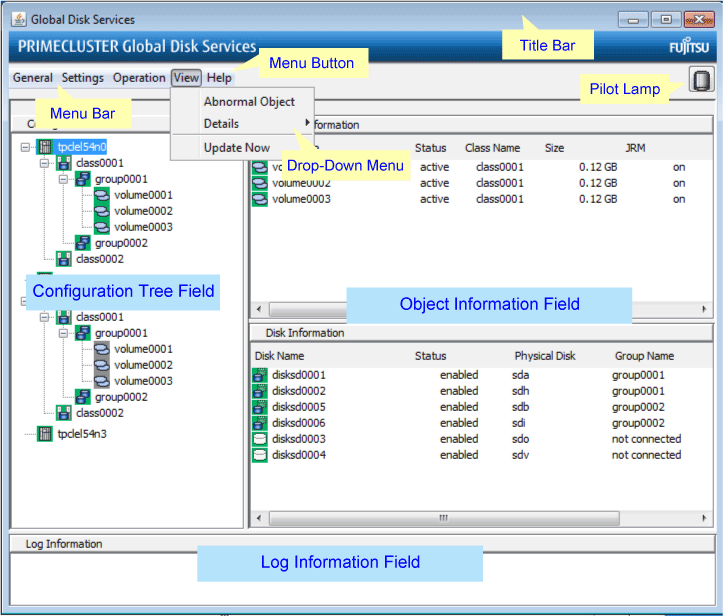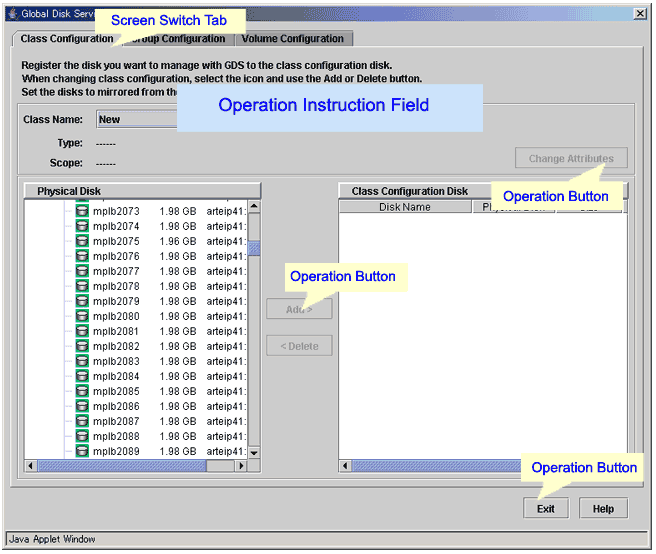Main Screen
Click <Global Disk Services> from Web-Based Admin View, and the screen below appears.
From the main screen, you can perform GDS object configuration, such as a class and a volume, status confirmation, and disk swap.
You can also configure and view the statuses of GDS Snapshot proxy objects and shadow objects and also operate those proxy objects.
The following operations are unsupported. Use commands for these operations.
Object operations in classes that include switch groups
(Information of relevant objects is displayed in blue.)
Operations of GDS Snapshot shadow objects
(Information of relevant objects is displayed in italic format.)
The screen configuration of the main screen is shown below.
Figure 4.1 GDS Management Screen (Main Screen)

Objects managed with GDS are displayed in a tree-structured directory system.
Each object has an icon depicting the type and the status of the object.
For details on the icon type and status, see "4.3 Icon Types and Object Status."
By selecting the node in the GDS configuration tree field, you can switch between the nodes you want to display or operate.
Detailed information of objects is displayed in table format.
The displayed contents vary according to the menus selected in [View]:[Details] and the object types selected on the GDS configuration tree.
For details on displayed contents, see "4.4 Object Information."
Displays error message output by the GDS daemon program.
Displays screen title (Global Disk Services).
Displays the menu buttons.
Allows you to control the objects selected on screen.
There are [General], [Settings], [Operation], [View] and [Help].
When a menu button from the menu bar is selected, a drop-down menu will be displayed.
For details on drop-down menu, see "4.2 Menu Configuration and Functions."
An on-screen menu that is displayed by a right-click on an object.
[Check Status] in the popup menu displays a description of the state of the object and the help to restore the object if it is faulty.
Shows the status of the monitored objects.
The lamp will indicate the following status.
Pilot Lamp | Status | Meaning |
|---|---|---|
| Normal | Normal status. |
| Abnormal | Critical abnormality |
| Abnormal | When red blinking warning lamp is single-clicked. |
| Degradation |
|
| Degradation | When yellow blinking warning lamp is single-clicked. |
GDS Configuration Settings screen
Select Configuration from [Settings] menu, and the "GDS Configuration Settings screen" shown below will appear.
Use the <Screen Switching Tab> to switch between "Class Configuration", "Group Configuration", and "Volume Configuration" settings screens.
Figure 4.2 GDS Configuration Settings Screen

For information on how to set each configuration, see "5.2.3 Operating from the Settings Menu."